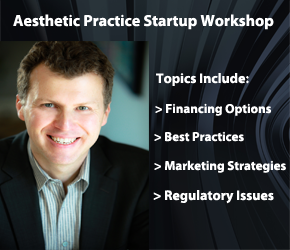Getting Enlightened About Sunscreens
Las Vegas, Nevada – The dark days of winter are waning, and many Americans are emerging from their homes, schools and offices to enjoy the sunny days ahead. However, if staying in the shade is not in your plans this summer, then understanding the risks and remediations associated with exposure to the sun is imperative. Scottsdale dermatologist and IAPAM faculty member, Dr. Jennifer Linder, shares her insight on the latest advancements in sun protection so you can stay safe from its harmful rays. “Ultraviolet Radiation (UVR) is responsible for up to 90% of all skin cancers and is the most preventable risk factor for this potentially deadly disease. However, recent science has absolutely given physicians and the public more opportunities for increased sun protection,” heralds Linder. Here are 5 tips and debunked myths to protect you from “the dark side of the sun.”
1. MYTH: Sun protection only has to be utilized when spending long periods in the sun
Dr. Linder comments that, “daily application of broad-spectrum sunscreen is “central” to the prevention of skin cancer. “Although, UVB rays do peak during the hours of 10:00am to 4:00pm, UVA rays remain constant throughout the day and are able to penetrate windows, clouds and clothing. In addition UV radiation is emitted from fluorescent and halogen bulbs found in most offices and homes. It is for this reason that everyone must wear sunscreen everyday regardless of time spent outdoors.”
2. TIP: Understanding the Acronyms – SPF, UVA and UVB
Dr. Linder walks us through the confusing world of sun-protection acronyms:
“Consumers are often not aware that the sun protection factor (SPF) label only indicates the amount of ultraviolet B short-wave ray (UVB) protection provided by a product. Certain ingredients must be utilized in order to receive ultraviolet A long-wave ray (UVA) protection as well. In order for a product to provide broad-spectrum UVA/UVB protection, avobenzone, mexoryl (ecamsule), titanium dioxide or zinc oxide must be included. A combination of UVA and UVB sunscreen ingredients and antioxidants will provide adequate protection, but only if applied correctly. At least one ounce (a shot glass full) of sunscreen is needed per application in order to get the full amount of protection a product is capable of providing.
Extremely high ratings of SPF can also be deceiving as SPF protection does not increase proportionally with an increased SPF number (e.g. An SPF 15 sunscreen protects the skin from 93% of UVB radiation, an SPF 30 sunscreen provides 97% protection, and an SPF 65 provides approximately 98% protection.) There are no sun protection products that block out 100% of UV rays. Unfortunately, higher SPF products are frequently less cosmetically elegant and could decrease use by consumers.
Finally, all sunscreens break down over time regardless of water resistance, SPF rating or ingredients used, and sunscreen products must be reapplied every two hours and following swimming and/or vigorous activity.”
3. MYTH: Overcast days or occasional exposure to the sun means less risk
Jennifer Linder cautions that, “one huge mistake people make is that they think that because it is overcast or cool outside, the sun is not as strong. UV rays are capable of penetrating through clouds and remain constant year-round, regardless of how bright it is or the temperature. Another dangerous misconception is that because some people only get sun once or twice a year while on vacation, they are not at high skin cancer risk. Studies actually indicate the opposite to be true, and show that intense sun exposure received during vacations may be more dangerous than constant, daily exposure received by those with outdoor professions. In fact, one blistering sunburn or five non-blistering sunburns throughout life more than doubles one’s risk of developing melanoma, making vacations one of the most crucial times to seek sun protection.”
4. TIP: Beyond Sunscreens – Other tools to help in sun protection
Consumers can also find lots of help beyond the sunscreen aisle at the drugstore. Dr. Linder shares that, “antioxidant serums and creams are also extremely helpful in sun protection. Ingredients such as vitamins C and E, EGCG from green tea, grape extracts and soy are excellent at protecting the skin cells from sun-induced free radical damage. Free radicals are thought to play an intricate part in the cell mutation that leads to skin cancer. Certain body lotions that are designed to hydrate the skin, and also offer SPF protection, are particularly beneficial in protection as well. These products are considered daily necessities and are offered by a number of manufacturers such as Eucerin® Everyday Protection Body Lotion SPF 15, Lubriderm® Daily Moisturizer with SPF 15 and PCA SKIN® Perfecting Body Hydrator SPF 30.
Protective items are also available to protect the skin while driving. These films are placed on car windows and reduce the amount of UVA and UVB by over 99%. This type of product will significantly reduce the amount of daily UV radiation received.
There are also certain lines of clothes, hats and swimwear that are specially designed and offer built-in UV protection. Manufacturers display an ultraviolet protection factor (UPF), which measures how much UVA and UVB radiation the garment is able to absorb. Consumers should look for articles with a UPF of at least 30 for adequate protection.
Clothing in general will provide some protection from the sun. Clothing with denser fabrics and a tighter weave will protect more than light-weight fabrics. To determine how dense an article of clothing is, hold it up to the sun and see how much light comes through. Color of fabric also plays a part in protection; black fabric offers significantly higher SPF than white fabric.
There are also colorless dyes in some clothing, like SunGuard, which contains the sunscreen Tinosorb FD. These additives are washed into clothes to increase a material’s SPF up to 30.
Finally, hats and sunglasses assist in shielding the skin and eyes from damaging UV rays as well. Look for wider brimmed hats and sunglasses with special UV coatings, to ensure the highest amount of protection possible.”
5. MYTH: Once burned, there is nothing to be done but grin and bear it
“Even though prevention is best, if sunburn does occur, there are steps one can take to decrease the severity and the risks involved,” recommends Dr. Linder. “It is often obvious when too much time has been spent in the sun, and if someone does suspect they have ‘over-done it’, they should immediately take 800mg of Ibuprofen every 6 hrs. This regimen may actually prevent sunburn from occurring or relieve the symptoms once sunburn presents itself, by calming inflammation.
Further, products containing a combination of red and brown algae, such as PCA SKIN® Anti-Redness Serum has shown to reduce UV-induced inflammation by up to 76%. Aloe vera has also been proven effective and used for decades in multiple products to reduce the symptoms of sunburn. Both over the counter and prescription products containing hydrocortisone will also calm inflammation and discomfort. Topical analgesics such as lidocaine, found in after-sun products like Solarcaine®, will assist in soothing the pain associated with sunburn.”
Conclusion
The Skin Cancer Foundation may have the last word in this discussion. “For a six billion-year-old star, the sun is certainly in the news a lot lately, mainly because it is still a source of uncertainty and confusion to many of us.” Furthermore, “no criteria exist in the U.S. for measuring and labeling the amount of UVA defense a sunscreen provides. Therefore, always wear a SPF of 15 or higher every day to protect against UVB, along with some combination of UVA-shielding ingredients. And be aware that no matter what sunscreen you use, some UV radiation still gets through to your skin, therefore, always follow a complete prevention program that includes seeking the shade and wearing protective clothing.”
Dr. Linder is a member of the Faculty of the IAPAM, and is a board-certified dermatologist and a fellowship-trained Mohs surgeon. Dr. Linder is also a formally trained biomedical engineer and chemist, and an expert in skin care product formulations. Dr. Linder has been featured in W, Fitness, Elle, New Beauty, Shape, Men’s Health, Parenting and Healthy Aging magazines.
This material was taken from the IAPAM’s Aesthetic Medicine Symposium (http://www.aestheticmedicinesymposium.com). For more information on the IAPAM’s educational programs or for information on the upcoming Aesthetic Medicine Symposiums in 2009, please contact Jeff Russell, Executive Director, IAPAM, at 1-800-219-5108 ext. 705, or visit http://www.iapam.com





